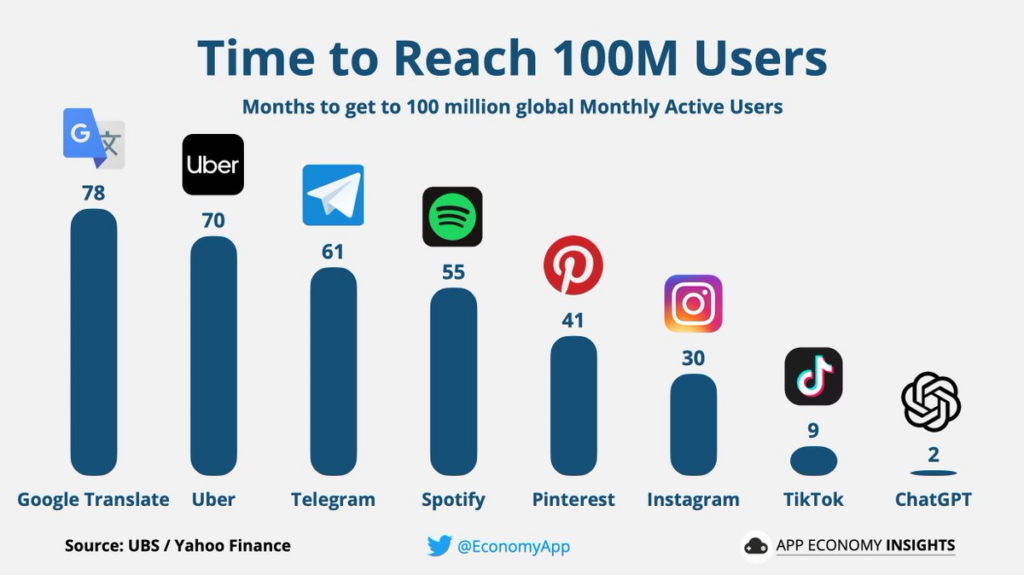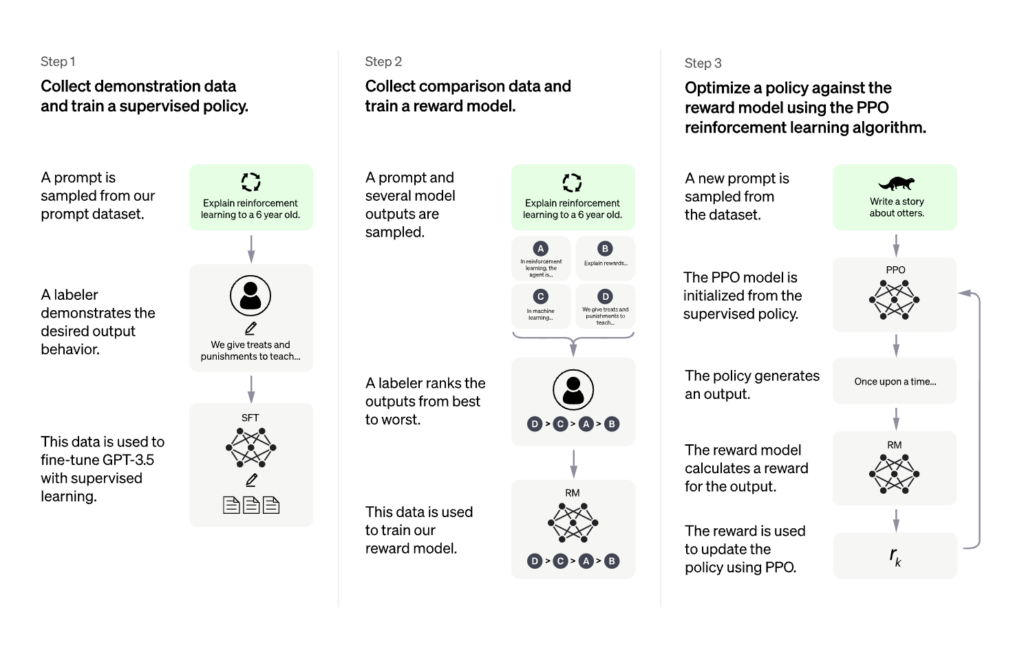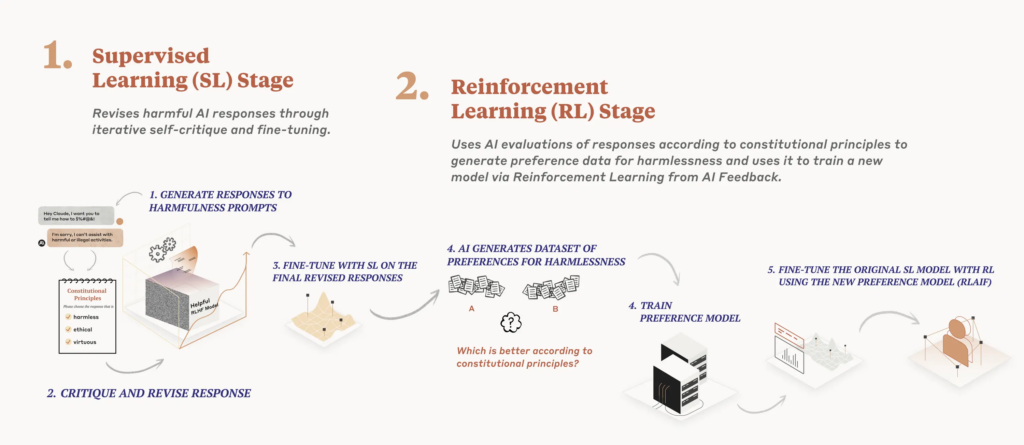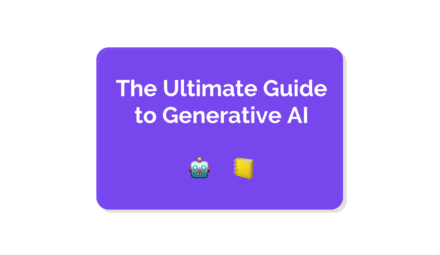In a recent article, we wrote about LLMs and their crucial role in the generative AI applications we know today. Some of the most prominent Generative AI products (from Anthropic, Google, OpenAI, and more) have been built around text-based interactions. Image and video generation products have also started to gain an important place in the overall Generative-AI landscape.
Let’s look at some of the most important AI products of our time.
ChatGPT
ChatGPT has been a viral sensation since its launch, catapulting all the records for consumer software products or web applications. It beat the likes of Instagram, Snapchat, and Spotify to become the fastest consumer app to reach 1 million, 10 million, and 100 million users.
ChatGPT is designed to be a general-purpose language model that can generate “human-like” responses and perform various language tasks such as writing emails, answering questions, writing blogs, summarizing given text inputs, etc.

Source: App Economy Insights
Around 9 in 10 (87.98%) ChatGPT users come to visit the app directly without any marketing or content efforts —this is equivalent to you typing chat.openai.com in your search bar.
ChatGPT is the only Generative AI product available with two different LLMs, GPT-3.5 and GPT-4. These GPT or Generative Pre-trained Transformer models are built on the “Transformer Architecture” first developed by a team of AI Researchers and Scientists at Google.
How was ChatGPT built and enhanced?
ChatGPT was trained using Reinforcement Learning from Human Feedback (RLHF) and supervised fine-tuning. Human AI trainers provided conversations, playing both sides of the user and AI assistant, and were given model-written suggestions to compose their responses. The resulting dataset was mixed with the InstructGPT dataset and transformed into a dialogue format. To create a reward model for reinforcement learning, comparison data of two or more model responses ranked by quality was collected from conversations between AI trainers and the chatbot. Using reward models, the model was fine-tuned using Proximal Policy Optimization through several iterations.
ChatGPT’s latest training data is from September 2021, this limits its potential and accuracy significantly.

Source: ChatGPT training method, OpenAI
Bing
Microsoft’s Bing is one of the world’s largest search engines, accounting only for 3% of global searches. Microsoft has had a very close technical and financial relationship with ChatGPT. After seeing the runaway success of ChatGPT, Microsoft soon integrated similar AI features into its search tool —becoming one of the very first search engines to do so. And hence, we got Bing AI Chat. Building on Bing’s new AI capabilities, Microsoft has gained significant market share, reaching 100M daily active users in March’23.
Bing AI Chat is built on the LLM as ChatGPT, and it has additional features that make it more experimental, accurate, and real-time oriented simultaneously. Unlike ChatGPT, Bing relies not solely on the training data but also on web crawling and scraping features. This enables Bing to generate responses based on current data. Bing AI is designed primarily for search and is optimized for better understanding natural language processing than ChatGPT.
Although Bing is less flexible and creative than ChatGPT, it has some unique features that come with directly integrating into the Bing web search. Users can use Bing to perform live tasks such as scheduling appointments and writing a blog article about the latest developments in cybersecurity.

Source: Board of Innovation
How does Bing AI Chat work?
Prometheus: Microsoft developed a proprietary technology, Prometheus, an AI model that combines fresh and comprehensive search index, ranking, and answers results from Bing search with the creative reasoning capabilities of OpenAI’s most-advanced GPT models.

Source: Prometheus, Microsoft
Bing Orchestrator: Prometheus then combines the outputs generated by Bing and GPT to develop internal queries using a Bing Orchestrator component. This combined answer is then presented to the user as human-like text.
Grounding: Internal Queries and Bing Search are critical components of Prometheus’s architecture since it provides up-to-date information to the underlying language model, enabling it to answer recent questions and reducing inaccuracies – this method is called grounding.
Google Bard
Google has been a pioneer in developing consumer AI technologies at scale. Its biggest product, Google Search, has been adopting AI principles from its early days, it has integrated small but useful AI features into its other products, such as Google Workspace. When OpenAI released ChatGPT to the public in its infancy, Google’s AI-pioneer status defaulted to being an AI laggard.
To flip that image, Google hurried to launch its version of a text-based generative AI product, Bard, in Feb’23, based on the PaLM2 language model.

Bard has been designed to be more than a generative AI chatbot, its goals and use cases align more with Bing AI Chat than ChatGPT. Bard can search the internet to answer user prompts and provide relevant “search recommendations” to complement the AI-generative direct response. With Bard, Google aims to build a semi-auto-pilot version of its Search tool.
Anthropic Claude
Claude is an AI chatbot developed by Anthropic —an AI research company that ex-OpenAI employees started. Claude is designed to be more user-friendly and easier to use than OpenAI’s ChatGPT, making it the better AI to converse with. Claude is not just developed to write human-like content but also to emulate certain non-cognitive behavioral characteristics. Claude can handle various topics and provide information on everything from the weather to current events. It is not limited in terms of historical data and gives presently-relevant results.
How does Anthropic Claude work?
Constitutional AI: Claude is one of the generative AI applications trained with Constitutional AI. Here’s a quick look at how it works.

Concluding
There are plenty more examples of outstanding generative AI applications. We wanted to explore some cases which have already reached the stage of business viability. While ChatGPT and Anthropic Claude primarily focus on text-based interactions, Bing and Google Bard aim to build a semi-auto-pilot web search.
As much as LLMs and Generative AI have outstanding capabilities, ChatGPT, Bard, and others are just the first look at what generative AI products can do. We’ll dive into more arguments and theories around generative AI in the future. Until then, feel free to read more from us on the topic.
Continue Reading
AI Unleashed: The Ultimate Guide to Large Language Models (LLMs)
AI in Cybersecurity: The 5 most critical risks for Enterprises
Generative AI in cybersecurity: Top 5 cyber security pains it will help to solve
